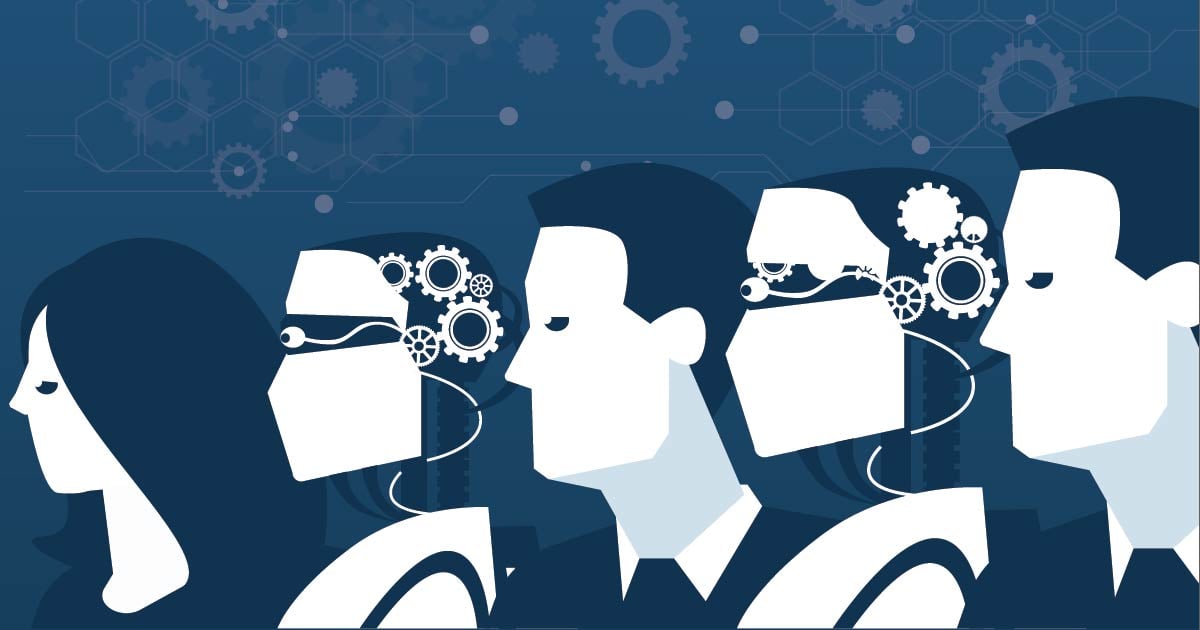Over the past year, concerns have been made regarding artificial intelligence replacing many human jobs in the insurance industry, particularly with positions cited as having the highest potential for automation such as underwriting and claims. However, as this advanced technology makes its way into the mass market, new research shows that the collaboration of machines and humans is actually complementary, enhancing current business capabilities in a variety of ways.
The Value of Machine–Human Collaboration
Research conducted by Accenture experts and co-authors of the book “Human + Machine: Reimagining Work in the Age of AI” shows that out of 1,500 companies surveyed, organizations where AI and humans worked side by side experienced significant performance improvements over traditional methods. Here, we’ll touch on the key benefits of machine–human collaboration in the areas of claims, underwriting, and customer service.
 Claims
Claims
According to WorkFusion, AI can help insurance adjusters process claims 80% quicker while reducing the number of people involved by 50%. By working in tandem with adjusters, AI can do much of the preliminary claims heavy lifting such as mining databases for information, validating policies, and connecting key facts from the claim to the policy. AI can also help facilitate and streamline interactions between insurers, agents, claims adjusters, and consumers. Today, AI shouldn’t be viewed as technology that will eliminate claims positions, but as one that can make available time for claims professionals to work on additional or more complex cases, as well as investigate cases where insurance fraud may be suspected.
 Underwriting
Underwriting
AI is also joining forces with underwriters by augmenting human capabilities. A key example would be the ability to assess onsite risks using drone data when an adjuster isn’t available, or in instances when it’s too dangerous to travel into certain situations or areas. The data can provide underwriters with immediate and accurate inspection information of the property without requiring a human to show up at the location. And, when a loss does occur, AI systems can lessen the workload for adjusters by streamlining processes to quickly facilitate adjudication efforts.
 Customer Service
Customer Service
In the area of customer service, individuals who handle inquiries such as billing and renewals are also reaping the benefits of the AI and human collaboration. Here, AI can help enhance a service representative’s current capabilities by saving them time, increasing accuracy, and reducing the duplication of processes. But, to deliver the best customer service, AI systems must be trained how to interact with humans. The fact is, customer service is an area where insurers can’t afford to not get right, which is why a human overseer is typically needed when collaborating with AI. For example, chatbots and virtual assistants can help field many basic consumer issues without human involvement. However, in instances where the machine is unable to deliver the desired outcome, a human can step in and take over.
Experts agree that it is highly unlikely that human roles in the insurance industry will be displaced by AI, particularly those that require subjective judgment and experience for claims management and underwriting. Today, insurers have a golden opportunity to benefit from the collaboration between humans and AI.
 Moving Forward
Moving Forward
A very recent article in the Harvard Review points out that in order to take full advantage of this collaboration, insurers must identify how humans can effectively augment machines, how machines can enhance what humans do best, and how business processes can be restructured and aligned to support the collaboration. Experts have outlined five principles insurers should consider when optimizing the human and machine collaboration. They are:
- Reimagining business processes
- Embracing experimentation and employee involvement
- Actively directing the AI strategy
- Responsibly collecting data
- Redesigning tasks to incorporate AI and cultivate related employee skills
 Conclusion
Conclusion
Humans and smart machine technology will continue to work together, helping make work processes more fluid and adaptive. But to get the most value out of AI, insurers must remain flexible and be ready to respond to the changing business landscape to see where and how they can optimize this collaboration of human and intelligent technology. Is modernizing premiums and claims payment processing in your company’s future? If so, give us a call. Our flexible digital platform can be the perfect complement to your existing billing management system.

